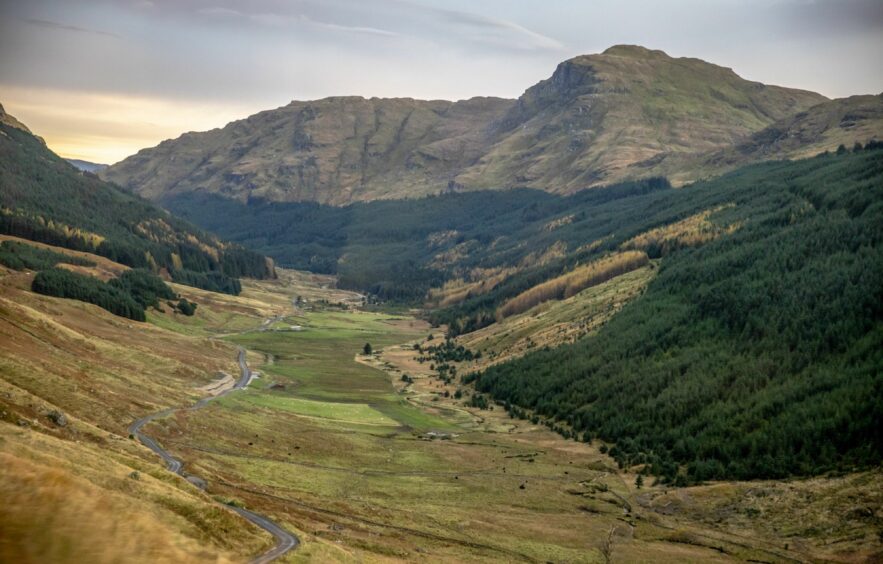
West of the COP26 climate conference, among the lochs and glens of Argyll, Hazel White toils on the front line of the fight against global warming.
Her job is at the less glamorous end of efforts to contain climate change: It involves wading into boggy wetlands, assessing the health of the peat, and carrying out restoration work where necessary with the help of an excavator.
“We feel pressure to do an awful lot more and find ways to restore peatlands quicker,” she said. “It would be good to be doing four times the amount of work.”
Peatlands cover 3% of Earth’s land surface, and are a vital ecosystem for the planet. They’re also a natural carbon sink, absorbing CO2 from the atmosphere and trapping it in the ground. But they’re under threat from climate change, drainage and fires, all of which dry up the peat and cancel out its carbon-capturing properties.
That puts peat on the agenda for the UN climate summit in Scotland.
Canada has the largest peatland carbon stock in the world, and a team of scientists made a plea at COP26 in Glasgow on Monday to save them from development. Protecting peatlands are crucial to US President Joe Biden’s forest conservation plan announced last week, while peatland is the UK’s largest carbon store, and restoration is part of the government’s commitments in its net zero plans.
The UK has more than 7 million acres (28,300 square kilometers) of peatland, placing it the world’s top ten countries for wetland area. Most are in Scotland, where the quantity of trapped carbon is equivalent to 140 years worth of its annual emissions.
But poor treatment of the land means it’s become a source of carbon instead of a sink, effectively contributing to climate change rather than mitigating it. In 2019, peatlands released 4% of the U.K.’s greenhouse gases.
That’s where White comes in. As a project officer for Peatland Action, part of the Scottish government-funded nature agency, she tours some of Scotland’s most majestic landscape, working with local farmers and landowners to identify areas that are in need of restoration.
Ideally, a bog should have a sloppy, wet interior that makes you sink to the top of your boots, says White: “There’s more solids in a pint of milk than a bog.”
But if it’s excessively dried out, peatland turns into a hard, crusty surface riven with deep cracks, allowing carbon dioxide to escape. Restoration essentially involves building dams to collect water and encourage the growth of mosses that help stop erosion.
Peatlands are found in most countries, from the Peruvian Amazon to the Congo Basin and the great blanket bogs of Ireland. There is still no comprehensive map of their locations, yet many are known to be at risk. In Southeast Asia, carbon-rich peatlands have burned uncontrollably in recent years, resulting in blanket smog for weeks. Indonesia’s dry season caused peatland fires to spike in 2015, generating a release of harmful gases on the same scale as Brazil’s total annual emissions.
Some 80% of Scotland’s 5 million acres of peatland are degraded and in need of urgent work. The Scottish Government aims to restore just shy of 620,000 acres by 2030 with 250 million pounds ($337 million) of investment.
Stephen Varwell, Peatland Action’s planning manager, says the benefits of restoration stretch beyond just carbon storage.
“The spongy texture of a healthy peat mitigates flash floods by slowly releasing water down the valley,” he said. A restored bog can also “protect our power lines from being knocked out in extreme weather events.”
Industries rely on peat too. Some of the world’s most prestigious brands of Scotch malt whisky rely on peat smoke to infuse the grain. Diageo Plc’s Lagavulin distillery on Islay is part of a peatlands preservation project on the west coast island.
Speaking from the COP26 “Peatland Pavilion,” Hans Schutten, program head at sustainability group Wetlands International, praised the international drive to tackle peatland degradation, saying that it can’t come too soon.
“The world is recognizing the huge urgency to take action on peatland damage now,” Schutten said. “We hope it’s more than just words.”
